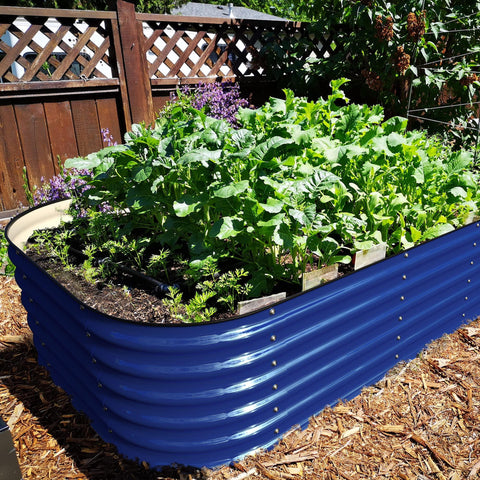From Olle Garden bedsto Table: Teaching Kids About Food and Nutrition Through Gardening
In today's fast-paced world, where convenience often trumps nutrition, it's more important than ever to instill healthy eating habits in our children. One way to achieve this is by involving kids in the process of growing their own food through Garden bed. This hands-on approach not only connects children with the source of their food but also provides valuable lessons about nutrition, responsibility, and sustainability. In this blog, we will explore the numerous benefits of teaching kids about food and nutrition through gardening and offer practical tips on how to get started.
Why Gardening with Kids Matters
- Nutrition Education: Gardening offers an interactive and tangible way to teach kids about the nutritional value of different foods. Children can learn about the vitamins, minerals, and other essential nutrients that different plants provide.
- Healthy Eating Habits: When kids actively participate in growing their own fruits and vegetables, they are more likely to develop a positive attitude toward eating them. This can lead to a greater willingness to try new foods and make healthier food choices.
- Connection to Nature: Gardening connects children with nature and the environment. It fosters an appreciation for the natural world and can inspire a sense of responsibility for taking care of it.
- Life Skills: Gardening teaches kids valuable life skills such as patience, responsibility, problem-solving, and teamwork. They learn to care for living things and understand the importance of consistent effort.
- Sustainability: Gardening promotes sustainability by teaching kids about the cycle of life and the importance of conserving resources. They learn about composting, recycling, and reducing food waste.


Getting Started
- Choose the Right Plants from Olle garden beds: Start with easy-to-grow plants like tomatoes, carrots, lettuce, or herbs. Consider your climate and available space when selecting plants.
- Design a Kid-Friendly Garden bed: Create a designated garden space for children. You can incorporate colorful signs, fun garden decorations, and child-sized tools to make it more engaging.
- Involve Kids in Planning: Let children have a say in what they want to grow. Encourage them to draw garden plans and decide on a garden theme or layout.
- Hands-On Learning: Teach kids about planting, weeding, watering, and harvesting. Explain the science behind plant growth and the importance of sunlight, soil, and water.
- Cooking Together: Incorporate cooking into the gardening experience. When the harvest is ready, involve kids in preparing simple recipes using the fruits and vegetables they've grown.

Educational Resources
There are plenty of educational resources available to enhance the gardening experience for kids:
- Children's Books: There are many children's books that focus on gardening and nutrition. Some popular options include "The Carrot Seed" by Ruth Krauss and "Eating the Alphabet" by Lois Ehlert.
- Online Resources: Explore online gardening resources designed for kids, such as interactive websites, videos, and virtual tours of gardens.
- Community Programs: Look for local gardening clubs or community programs that offer gardening workshops for children.
Gardening is a fun and effective way to teach kids about nutrition and food, and the lessons they learn can last a lifetime. In addition to promoting sustainable living, it also builds a connection to nature, instills important life skills, and supports healthy eating habits. So put on your work gloves, roll up your sleeves, and take your kids on a tour from the garden to the dinner table. You can cultivate a lifelong passion of healthy eating by working together.
